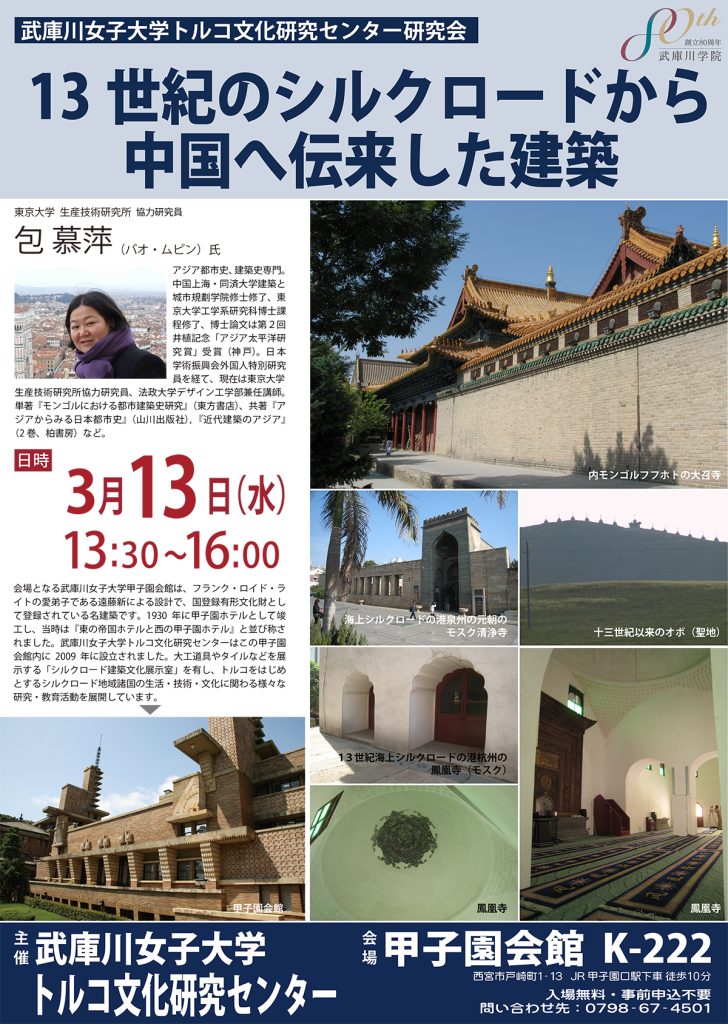News & Events
ITCS Seminar #02 (2018 Academic Year)
Architecture Imported through the Silk Road to China during the Thirteenth Century
Date: March 13 (Wednesday), 2019, 13:30-16:00
Venue: K-222, Koshien Hall
Lecturers: Dr. Muping BAO (Cooperative Researcher, Institute of Industrial Science, The University of Tokyo)

Seminar Poster
The 2nd Seminar of the Institute of Turkish Culture Studies of the 2018 academic year was held at the Kōshien Kaikan on Wednesday, March 13th, 2019. We invited Muping Bao, PhD, Cooperative Researcher, Institute of Industrial Science, The University of Tokyo. She delivered a lecture titled “Architecture Imported through the Silk Road to China during the Thirteenth Century.”
Dr. Bao lectured at two of our seminars this academic year. This lecture was the second of the two, in which she gave a chronological account of cities and architectural structures of the thirteenth century, during the time of the Mongolian Empire. While the architectural culture of this time centered on wooden construction, that of Western Asia and Central Asia had different architectural elements, such as stone construction, masonry of sun-dried bricks, domes, arches, and vaults. Introducing many architectural examples, including Islamic mosques and Buddhist temples, Dr. Bao explicated, in a clear manner, the forms of coexistence and fusion between the original architectural culture of the Mongolian Empire and the different architectural systems introduced from Western Asia and Central Asia. Additionally, Dr. Bao gave a detailed account of the exchange of architectural culture on the Silk Road, covering topics such as Tibetan and Indian influences on Buddhist architecture in the Mongolian Empire.
During the lecture, Dr. Bao also shared some valuable photographs from the field research in Mongolia, China, the Xinjiang Uygur Autonomous Region, Uzbekistan, and other places, thus creating a vivid picture of architectural and cultural exchanges along the Silk Road.
